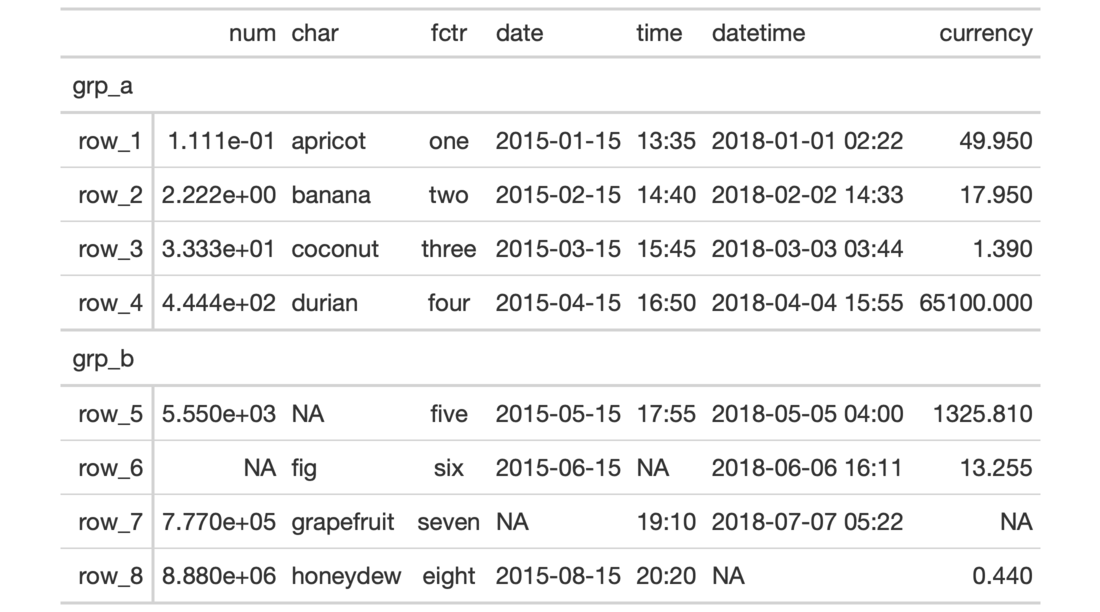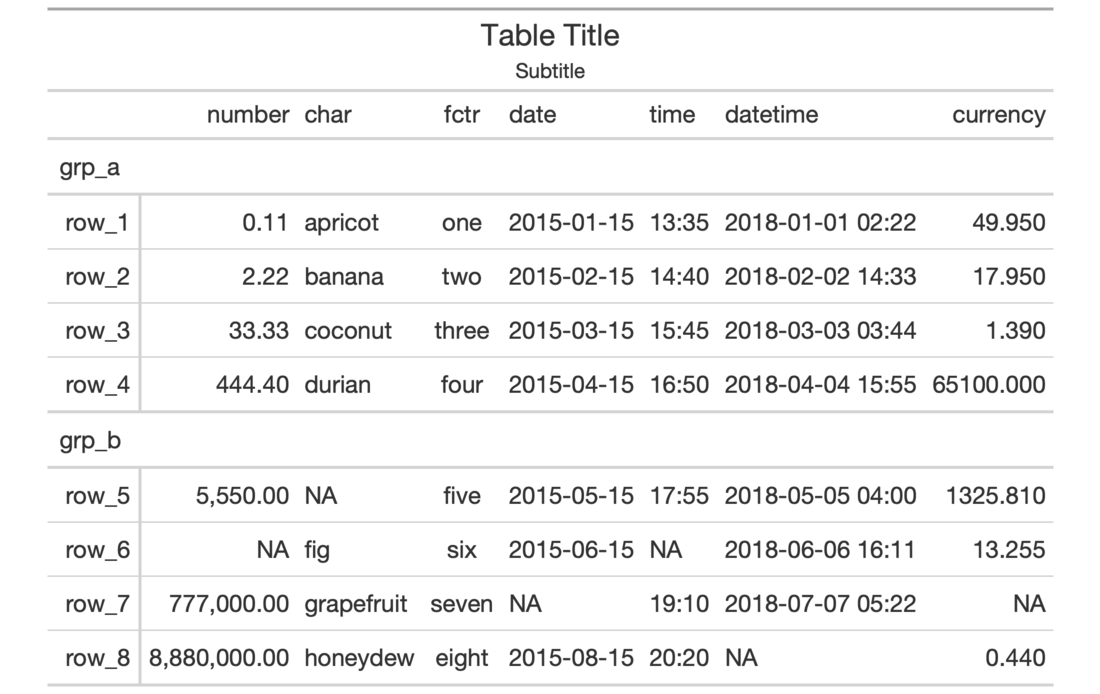The gt() function creates a gt table object when provided with table
data. Using this function is the first step in a typical gt workflow.
Once we have the gt table object, we can perform styling transformations
before rendering to a display table of various formats.
gt( data, rowname_col = "rowname", groupname_col = dplyr::group_vars(data), rownames_to_stub = FALSE, auto_align = TRUE, id = NULL, row_group.sep = getOption("gt.row_group.sep", " - ") )
Arguments
| data | A |
|---|---|
| rowname_col | The column name in the input |
| groupname_col | The column name in the input |
| rownames_to_stub | An option to take rownames from the input |
| auto_align | Optionally have column data be aligned depending on the
content contained in each column of the input |
| id | The table ID. By default, with |
| row_group.sep | The separator to use between consecutive group names (a
possibility when providing |
Value
An object of class gt_tbl.
Details
There are a few data ingest options we can consider at this stage. We can
choose to create a table stub with rowname captions using the rowname_col
argument. Further to this, stub row groups can be created with the
groupname_col. Both arguments take the name of a column in the input table
data. Typically, the data in the groupname_col will consist of categories
of data in a table and the data in the rowname_col are unique labels
(perhaps unique across the entire table or unique within groups).
Row groups can also be created by passing a grouped_df to gt() by using
the dplyr::group_by() function on the table data. In this way, two or more
columns of categorical data can be used to make row groups. The
row_group.sep argument allows for control in how the row group label will
appear in the display table.
Figures


Function ID
1-1
See also
Other Create Table:
gt_preview()
Examples
# Create a table object using the # `exibble` dataset; use the `row` # and `group` columns to add a stub # and row groups tab_1 <- exibble %>% gt( rowname_col = "row", groupname_col = "group" ) # The resulting object can be used # in transformations (with `tab_*()`, # `fmt_*()`, `cols_*()` functions) tab_2 <- tab_1 %>% tab_header( title = "Table Title", subtitle = "Subtitle" ) %>% fmt_number( columns = vars(num), decimals = 2 ) %>% cols_label(num = "number")